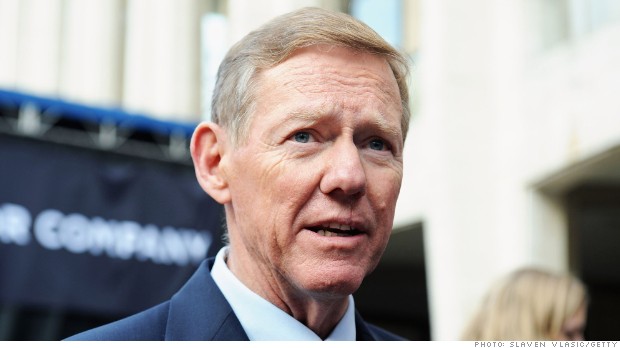





Popular Posts: AAPL – How to Trade the Apple Stock Split9 Cheap Stocks to Buy Now for $10 or Less11 Retailers to Dump Now Recent Posts: 11 Best Cheap Stocks Under $10 to Buy Now AAPL – How to Trade the Apple Stock Split Google Killing Coupons – Will GRPN, SALE and COUP Survive? View All Posts
Identifying cheap stocks is increasingly difficult as the market continues to hit new highs. But even if you have a long list of cheap stocks trading for a low share price, that in itself is no guarantee of success.

Source: Flickr
That's because the best cheap stocks aren't battered companies that sat out the past few years of the bull market — they are cheap stocks that will become expensive in a hurry thanks to favorable growth prospects.
Sometimes the best cheap stocks have underperformed, but are on the cusp of a turnaround. Other times the best cheap stocks are simply sleepy companies that have been overlooked and actually are worth much more than investors are currently paying per share.
But the bottom line is that "cheap" isn't just based on the headline price you're paying – it's about a fair price, with a good value and the realistic hope of big returns down the road.
So what are the best cheap stocks to buy now? Here's my list of 11 picks under $10 that could deliver big returns during the next few months:
Next Page
Best Cheap Stocks – Northwest Biotherapeutics (NWBO)
 Price as of 6/5/14: $5.71
Price as of 6/5/14: $5.71
No list of high-growth, low-priced stocks would be complete without a risky biotech play in there … so I'll start with Northwest Biotherapeutics (NWBO).
Northwest is your typical big-risk, big-reward biotech small-cap stock. The $330 million company is unprofitable as it burns cash on expensive drug research and trials, primarily regarding treatments that are designed to help patients' own immune systems gain strength and fight off certain kinds of cancer. Some of the most promising treatments right now target brain cancer and prostate cancer.
You can read up more on NWBO trials and treatments here and elsewhere around the web, but the bottom line is that this is a speculative stock that will live or die based on the success of its current research and subsequent FDA approval.
Shares have been quite volatile, but it's worth noting that Northwest Biotherapeutics is up 50% year-to-date — and was up by even more just a few months ago.
Shares still trade around $6 apiece, however, so if you want to take a flier on tomorrow's cancer cures, then consider a small position in NWBO. Just make sure you understand the risk and volatility involved with unprofitable, early-stage biotech stocks like this. They can rack up big wins, but also big losses if things don't go right.
Next Page
Best Cheap Stocks – RF Micro Devices (RFMD)
 Price as of 6/5/14: $9.65
Price as of 6/5/14: $9.65
RF Micro Devices (RFMD) is not an incredibly sexy business, creating chips and electronic components that deal largely with radio waves. This includes amplifiers and modulators, as well as cellular products for mobile use.
RFMD stock got caught up in the dot-com boom, peaking at $80 a share (adjusted for splits) before crashing to single digits, where it has remained for most of the time since 2002. However, after the obvious bubble valuations of 2001 evaporated and the company's stock splits proved all for naught, the company has been quite stable ever since.
RF Micro Devices surely has had its challenges, including a recent restructuring that included the layoff of 120 employees at its North Carolina headquarters last year. But RFMD has emerged more profitable, and is projecting that the current fiscal year will be the most profitable since the Great Recession on an earnings-per-share basis.
Revenue is moving in the right direction, and with a broad tailwind for the electronics industry as consumers and businesses start spending more — especially on mobile technologies — RFMD could be on the cusp of a big move. Shares already are up an impressive 88% since Jan. 1 on strong earnings, so there clearly is a wind at this company's back … meaning it won't be cheap for long.
Next Page
Best Cheap Stocks – BlackRock Kelso Capital Corp. (BKCC)
 Price as of 6/5/14: $8.70
Price as of 6/5/14: $8.70
BlackRock Kelso Capital Corp. (BKCC) is a business development company, or BDC, which generates revenue from investments in and loans to midsized companies. As that capital generates returns, BlackRock Kelso shares generate big dividends for shareholders.
Of course, that also means BKCC lives and dies by its underlying investments.
You can look into its full list of investments here for more detail. But be careful, because performance of BlackRock as a stock might not be as straightforward as it seems based on these component investments. For instance, BKCC stock actually declined in 2013 despite a roaring stock market. And right now, the company actually trades for a 10% discount to its book value and a single-digit forward P/E.
That's in part because nothing is for certain, and an economic downturn would take a bite out of many underlying investments in the BlackRock Kelso portfolio. Similarly, interest-rate risks may exist for some loans should rates move higher.
But the good news is that even if shares just stay steady, you can generate a double-digit return from dividends alone. BlackRock Kelso currently boasts a monstrous dividend yield of more than 12% (calculated from four previous payments of 26 cents over the last four quarters). Also, BKCC paid 32 cents a share as recently as 2010.
If the economy turns a corner and more midsize companies look to expand, BlackRock Kelso will benefit handsomely. There is the risk of a dividend cut too, sure, but there seems to be plenty of room for error with a yield like this.
Next Page
Best Cheap Stocks – Shanda Games (GAME)
 Price as of 6/5/14: $6.71
Price as of 6/5/14: $6.71
China is a huge market for gaming, with the mobile video game business alone set to hit $3 billion this year — double what it was a short while ago.
As one of the most popular Internet video game portals in the nation, Shanda Games (GAME) is uniquely positioned to benefit from this growing entertainment business in China. Shanda's massive online role-playing games span fantasy, strategy and martial arts themes. It also has a range of mobile games for the Apple (AAPL) iPad or Google (GOOG) Android devices to ensure it's not tethered to PC or console gaming like some of the other players out there.
Shanda had a pretty stagnant top line in 2013, and admittedly saw revenue decline slightly in its latest earnings report. But with an estimated annual growth rate of 10% across each of the next five years, the long-term outlook remains strong. And considering the poor growth prospects elsewhere, the tailwind for GAME stock looks even more impressive in this tough market.
Shanda is up 60% in the past year in part thanks to buyout rumors, but remains one of the best cheap stocks out there.
Next Page
Best Cheap Stocks – Huntington Bank (HBAN)
 Price as of 6/5/14: $9.52
Price as of 6/5/14: $9.52
Huntington Bancshares (HBAN) has largely tracked the rest of the market in the past year. But the prospect of brisk growth in commercial and consumer lending across the Midwest — and, of course, dividend increases to come with that expansion — could lift the regional bank across the next 12 to 18 months.
Unlike a lot of cheap stocks on this list, HBAN shares pay a decent dividend worth a 2.1% yield — only slightly less than Treasuries right now — and the company is soundly profitable with room for dividend increases down the road; Right now, Huntington's dividend is roughly a quarter of profits.
Sure, the U.S. Federal Reserve has to sign off on any dividend increase in the wake of the financial crisis; however, HBAN continues to improve and was not identified as a problem bank in the most recent round of "stress tests" from the Fed.
Sure, banks are a highly cyclical business and Huntington still trades for a slight premium to book value. However, an improving macro picture will continue providing a tailwind to HBAN going forward … and at $9 and change per share, this stock won't stay under $10 for long.
Next Page
Best Cheap Stocks – QuickLogic (QUIK)
 Price as of 6/5/14: $xxx
Price as of 6/5/14: $xxx
QuickLogic (QUIK) is a "fabless" semiconductor company, meaning it designs and markets chips but does not fabricate them itself. QUIK semiconductors power tablets, smartphones and other devices — but unlike a company like Intel (INTC), you don't have to worry about the capital expense of massive manufacturing infrastructure with this company.
QuikLogic simply designs the chips, sells them to gadget companies and allows a third-party company to make the actual products.
The stock has popped more than 100% in the past year, proving the power of QUIK. Even more impressive is that this strength has taken place even as some of the most fashionable, high-growth names in tech have flamed out — including Amazon.com (AMZN) and Twitter (TWTR), among others.
Now, QUIK stock did step off a cliff in May after weak guidance and poor earnings, giving up about 30% in short order. But after a steep decline, investors rapidly changed course and started buying the stock back as the bullish predictions for the long term outweighed short-term setbacks. Now, the stock is right back where it was before it reported earnings.
You're clearly in store for volatility with QuikLogic. However, there also are myriad reasons to be bullish, including a big deal with Samsung (SSNLF) to use its chip designs in its flagship Galaxy smartphones.
Next Page
Best Cheap Stocks – CEMIG (CIG)
 Price as of 6/5/14: $7.22
Price as of 6/5/14: $7.22
Utility stocks underperformed as the market went "risk on" in 2013. At the same time, emerging markets have taken a beating thanks to a slowdown in Latin America and China.
So why would you stick your neck out CEMIG (CIG), a South American utility that has been quite challenged as of late?
Simple: Because things will turn around eventually — and when they do, CEMIG will soar.
CEMIG is a great opportunity to play growth in Brazil in a low-risk way — because after residential customers and businesses get on the electric grid, they tend to stay on it. Additionally, CIG stock yields a dividend of about 8% based on its last two payouts.
Admittedly, growth is choppy and distributions are volatile. But getting a juicy dividend will help ease the pain if CEMIG stock goes nowhere even as U.S. stock chug higher — and best of all, you'll have a good footprint in emerging markets for the inevitable change in sentiment.
Unless you think South American stocks will never bounce back, it's time to start considering a bargain buy in the region while valuations are so depressed. CEMIG is a good low-risk way to increase your exposure there without as much volatility as higher-growth emerging market stocks — and it's a cheap stock to boot, at around $7 per share.
Next Page
Best Cheap Stocks – Lionbridge Technologies (LIOX)
 Price as of 6/5/14: $5.61
Price as of 6/5/14: $5.61
Lionbridge (LIOX) is the kind of cheap, small-cap stock that investors love.
This tech stock has good medium-term and long-term performance, with 88% returns in the past 12 months, and roughly 150% returns since January 2010. And while the stock is off materially from 52-week highs set in February, it is actually pretty flat since late January after a post-earnings pop proved a bit overdone.
Beyond the performance, the positioning is good. LIOX provides language translation services for some of the leading international industrial and technology companies, including Microsoft (MSFT) and Google (GOOG). In the past few years, the company has grappled with cutbacks and soft enterprise spending from its major clients … but recent news that Skype (a MSFT property) will be rolling out impressive translation functionality bodes quite well for LIOX stock if they have a piece of that pie going forward.
Sure, revenue at Lionbridge Technologies has been steadily rising and a lot of the previous success has been baked in. However, anyone who is bullish on enterprise technology spending going forward should consider LIOX as a cheap way to get exposure to this segment.
Next Page
Best Cheap Stocks – Exco Resources (XCO)
 Price as of 6/5/14: $5.12
Price as of 6/5/14: $5.12
Exco Resources (XCO) is an onshore oil and natural gas play focused mainly on shale operations. Its focus is on using horizontal drilling to extract gas from shale formations in east Texas, north Louisiana, Appalachia and the Permian Basin in west Texas.
XCO is one of many oil and gas small-caps that could be great long-term buys, but has faced underperformance as of late; XCO stock is flat in 2014 and down about 35% in the last 12 months.
However, Exco has been right-sizing itself for several years, including a big drilling rig reduction (from 24 to five) in 2012, as well as shaving 60% of its contractors and a sixth of its full-time workers. And currently, XCO is working reducing debt and improve liquidity – including a partnership with Phil Falcone's iconic Harbinger Group — to improve its capital structure.
The good news is that results seem to be paying off, and the harsh environment for energy stocks seems to have abated a bit. The last five straight quarters show year-over-year sales growth, and as a result, Exco is set to see significant earnings improvement this year and a return to consistent profitability.
The fact that the stock offers a highly sustainable 3.8% dividend to tide you over as you wait for a recovery in energy prices or demand means this is a reasonable cheap stock to buy.
Next Page
Best Cheap Stocks – Advanced Semiconductor Engineering (ASX)
 Price as of 6/5/14: $6.42
Price as of 6/5/14: $6.42
Advanced Semiconductor Engineering (ASX) builds and distributes integrated circuits and other electronics. While that's not as sexy as other chipmakers that play to mobile, it's still a good business, considering the general demand for microchips in everything from cars to computers to TVs.
The Taiwan-based company is close to many Asian electronics manufacturers. And those manufacturers don’t need to crank out anything as sexy as Apple’s iPhone; ASX still will have a strong baseline simply from the sheer number of high-tech devices out in the world.
Moreover, ASX is not a chip designer, just a manufacturer. That means while it doesn't have the same big margins as the companies who create the next hot chip, it also doesn't have the same risk to get it right with R&D. Advanced Semiconductor's diverse business makes it a stable player for the long haul, and not as finicky as companies that rely heavily on laptops an desktops. That stability is somewhat reflected in the form of a 2.8% dividend yield.
ASX isn’t an exciting business in the least, but its returns are — ASX is up 58% in the past year and 33% year-to-date. With a decent dividend, decent revenue and profit growth and momentum for share prices, ASX could be the best stock to buy for around the $5 mark right now.
Next Page
Best Cheap Stocks – Hercules Offshore (HERO)
 Price as of 6/5/14: $4.48
Price as of 6/5/14: $4.48
Oil stocks haven't really been all that kind to investors over the last few years as weak pricing coupled with weaker energy demand in emerging markets has hurt the bottom line. And one stock that has taken a beating is offshore oil drilling services company Hercules Offshore (HERO).
But the bottom line is that crude oil prices have moved to above $100 a barrel and are staying there, helping margins. And at the same time, the world's easy oil is gone and energy companies are increasingly turning to harder-to-access offshore oil and gas fields to bolster reserves. That means a long-term tailwind for oil services stocks like HERO despite past troubles.
Now, Hercules’ stock price is down more than 30% in the last year. But the company divested a number of barge-based rigs in 2013, and has posted a profit in four of the past five quarters — with revenue growth to boot.
HERO appears to be right-sized now for the current market environment and has decent upside potential if investment in oil and gas drilling stays strong.
After a big drop during the past few years, much of the negativity has been priced into this cheap stock.
Jeff Reeves is the editor of InvestorPlace.com and the author of The Frugal Investor's Guide to Finding Great Stocks. As of this writing, he did not hold a position in any of the aforementioned securities. Write him at editor@investorplace.com or follow him on Twitter via @JeffReevesIP.






 Popular Posts: AAPL – How to Trade the Apple Stock Split9 Cheap Stocks to Buy Now for $10 or Less11 Retailers to Dump Now Recent Posts: 11 Best Cheap Stocks Under $10 to Buy Now AAPL – How to Trade the Apple Stock Split Google Killing Coupons – Will GRPN, SALE and COUP Survive? View All Posts
Popular Posts: AAPL – How to Trade the Apple Stock Split9 Cheap Stocks to Buy Now for $10 or Less11 Retailers to Dump Now Recent Posts: 11 Best Cheap Stocks Under $10 to Buy Now AAPL – How to Trade the Apple Stock Split Google Killing Coupons – Will GRPN, SALE and COUP Survive? View All Posts  Source: Flickr
Source: Flickr  Price as of 6/5/14: $5.71
Price as of 6/5/14: $5.71 Price as of 6/5/14: $9.65
Price as of 6/5/14: $9.65 Price as of 6/5/14: $8.70
Price as of 6/5/14: $8.70 Price as of 6/5/14: $6.71
Price as of 6/5/14: $6.71 Price as of 6/5/14: $9.52
Price as of 6/5/14: $9.52 Price as of 6/5/14: $xxx
Price as of 6/5/14: $xxx Price as of 6/5/14: $7.22
Price as of 6/5/14: $7.22 Price as of 6/5/14: $5.61
Price as of 6/5/14: $5.61 Price as of 6/5/14: $5.12
Price as of 6/5/14: $5.12 Price as of 6/5/14: $6.42
Price as of 6/5/14: $6.42 Price as of 6/5/14: $4.48
Price as of 6/5/14: $4.48 Getty Images
Getty Images  (Fortune) Ford CEO Alan Mulally is doing his best to tamp down speculation that he has become the frontrunner among the candidates to succeed Steve Ballmer as CEO of Microsoft. He tells USA Today that "I love serving Ford and have nothing new to add to (my) plans to continue serving Ford." Executive chairman Bill Ford underscored the point in an interview with Bloomberg television, saying "The plan is, he's going to stick around."
(Fortune) Ford CEO Alan Mulally is doing his best to tamp down speculation that he has become the frontrunner among the candidates to succeed Steve Ballmer as CEO of Microsoft. He tells USA Today that "I love serving Ford and have nothing new to add to (my) plans to continue serving Ford." Executive chairman Bill Ford underscored the point in an interview with Bloomberg television, saying "The plan is, he's going to stick around."  Ford Fusion now made in U.S.
Ford Fusion now made in U.S. 
 MORE GURUFOCUS LINKS
MORE GURUFOCUS LINKS 
 The expert featured in this column, Keith Fitz-Gerald, may or may not own positions in any investment vehicle mentioned here. The views and opinions expressed are his or her own.
The expert featured in this column, Keith Fitz-Gerald, may or may not own positions in any investment vehicle mentioned here. The views and opinions expressed are his or her own.